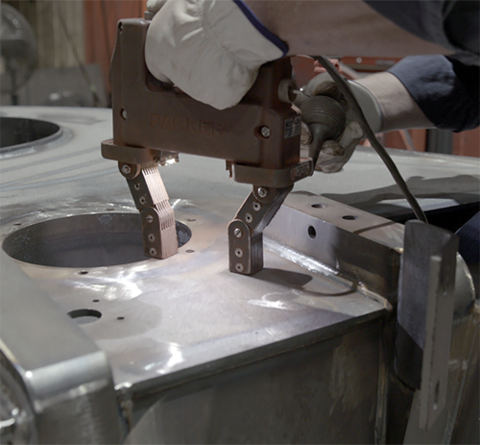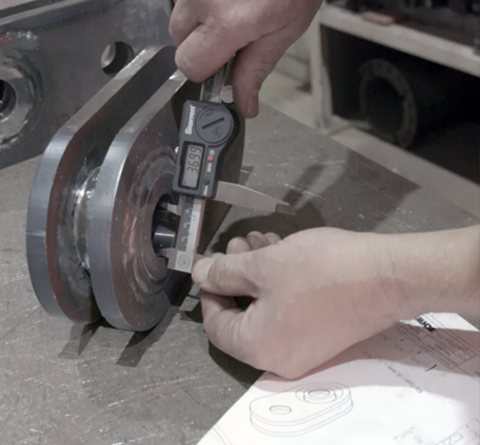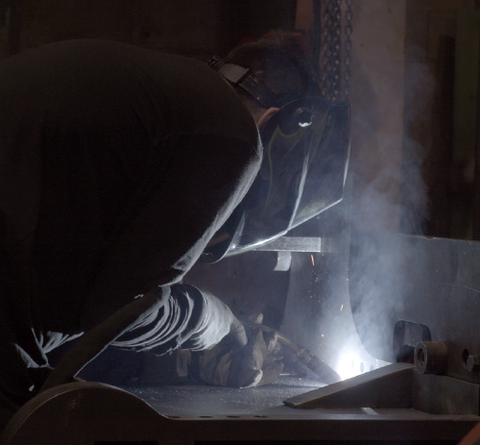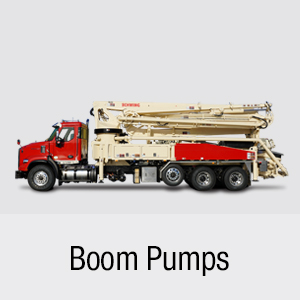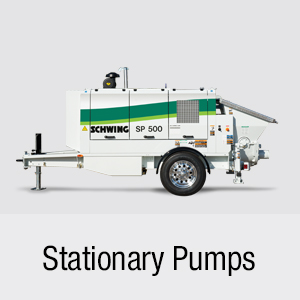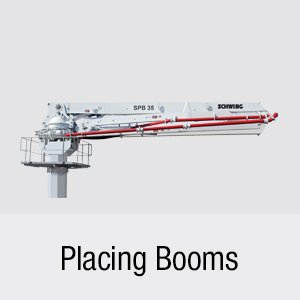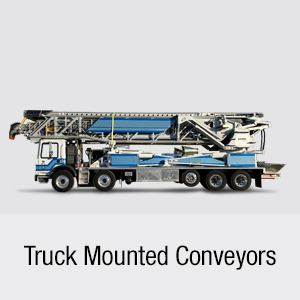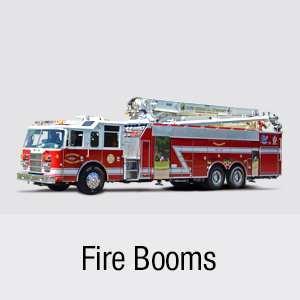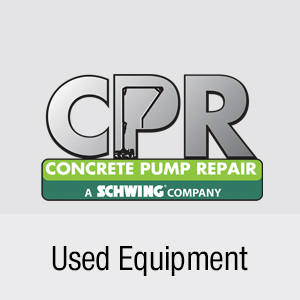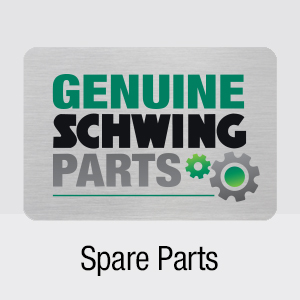Boom Pump Safety
Strength, Safety, and Testing: The Essentials of Concrete Pump Construction
Concrete pumps are vital to construction projects, but their durability, reliability, and overall performance depend on the quality of materials and the manufacturing practices used to create them. Very importantly, that also is critical in delivering a machine that can be operated safely on job sites. Concrete pumps known for outstanding performance tend to have things in common: high-quality steel, advanced assembly practices, and up-to-date components. By understanding these factors, industry professionals can make informed decisions when selecting concrete pumping equipment for their projects.
The Importance of Materials and Manufacturing Processes
Steel plays a crucial role in welding heavy structures like those employed to provide stability for concrete pumps. Its strength and structural integrity make it ideal for constructing frames and load-bearing components.
But not all steels are created equal. Different grades of steels have specific characteristics and attributes. Higher-quality steels offer increased strength, better corrosion resistance, improved ductility, or enhanced heat resistance. They typically undergo stricter quality control measures during production, ensuring consistency and adherence to desired specifications. They may also be made from purer raw materials and undergo advanced refining processes. Advanced manufacturing techniques and precise alloying elements contribute to improved performance and reliability in critical applications – such as building construction.
Using higher-quality steel when constructing concrete pumps can make a significant difference. Superior strength and durability of the steel components provide increased resistance to the heavy loads and stresses encountered during operation. This ensures a longer lifespan for the pump, reducing maintenance and replacement costs. Furthermore, corrosion resistance helps protect against rust and deterioration, extending service life and maintaining optimal performance in harsh construction environments. High-quality steel can also withstand heat generated by the pump's operation, preventing deformation or structural failures. Carbon content is another major factor in the strength of steel. The lower (or higher ?) the carbon content the stronger the steel and the more resistance it is to structural degradation over time.
Use of higher grade steel though is only one component in ensuring stability, durability, reliability, and with that safety. Ensuring that the forming, welding, and other processes are performed by individuals with the appropriate welding and quality control certifications is also critical to ensure that the concrete pump will operate safely within its design parameters.
Quality assurance and testing are the final ingredients to ensure a concrete pump’s readiness for safe operation.
Seven Critical Factors
Assembly practices have advanced over time, and today, equipment manufacturers must consider seven factors critical in concrete pump construction.
1 - E-STOP Buttons – A safety device used to stop the concrete pump in the event an emergency. When an E-STOP button is pressed, all hydraulic oil is sent to the tank and all functions are placed in neutral. E-STOP buttons should be checked daily to ensure they are working properly. Check each button for any physical damage. The harness and connectors should be checked for any frayed or lose wires and that the connector is free from corrosion.
2 - Structural Steel – Highly weldable steel allows for strong, durable components, ensuring a machine’s stability and longevity. All structural components should be checked daily for cracking, corrosion, and deformation in the steel. If any of these conditions are found, they should contact the manufacturer immediately on how to proceed. If repairs are necessary, use only manufacturer certified repair technicians, following manufacturer approved repair procedures.
3 - Hopper Grate Switch – This function monitors the position of hopper grate. If the grate is lifted, a signal is sent to shut the concrete pump off. Once the hopper grate is closed, the pump will have to be reactivated. The hopper grate prevents operators and jobsite personnel from accessing the hopper area while the machine is pumping. This switch must by tested to ensure it’s working properly. Check the condition of the switch along with the harness. The harness and connectors should be checked for any frayed or lose wires and the connector is free from corrosion. The hopper grate switch should never be bypassed for any reason.
4 - Safety Guards – Concrete pump safety guards shield operators from hazards at the jobsite. They act as barriers, preventing contact with dangers such as moving parts, high-pressure lines, or hot surfaces. Proper functioning of safety guards is crucial for operator safety, hazard mitigation, regulatory compliance, equipment protection, and overall risk reduction. Before every pour, the operator should ensure all safety guards are in place and free from damage. Any missing guards should be replaced immediately and before any work begins.
5 - Hydraulics Components and Hoses – Preventing hydraulic leaks is crucial for several reasons. Leaks can lead to a loss of system pressure, affecting a pump’s performance and efficiency. Leaks can also cause fluid contamination, resulting in accelerated wear and damage to hydraulic components. These leaks pose safety risks, as hydraulic fluids are often under high pressure and can cause injury to operators or nearby personnel. Additionally, leaks contribute to environmental concerns due to the potential release of hazardous fluids. All hydraulic components should be checked for leaks daily. Hydraulic hoses should be inspected for wear or frayed edges. Check for any leaks, kinks, or damage to hoses. Hydraulic hoses should last between one and two years with many lasting up to ten years, so if the hoses on your equipment are failing in less than two years, then there are external factors that are reducing their life. When replacing hoses, take note of the pressure rating. Many concrete pumps use high and low pressure rated hoses. Ensure the replacement hose your installing meets all pressure requirements.
6 - Boom Inspections – It is essential for concrete pump owners to stay current on boom inspections. Inspections ensure safety and help identify structural weaknesses, allowing for timely repairs or replacements to prevent accidents.
Furthermore, ASME B30.27-2009 Standard 27-2.1.3 Periodic Inspections 27-2.1.3.1, requires that complete inspection of the material placing boom and structural support system be performed by a qualified person at the intervals listed below:
- First 5 years: every 2,000 working hours, or at least once per year (whichever occurs first)
- 5 to 10 years: every 1,000 working hours, or at least once per year (whichever occurs first)
- 10 years and older: every 500 working hours, or at least once per year (whichever occurs first)
Boom inspectors will check all structural components, such as boom sections, pedestal, outriggers, and turret. Along with the structural components, hydraulic cylinders, holding valves, boom rests, steps and safety decals should also be inspected. Any repairs found during inspection should be replaced or repaired immediately by qualified personnel.
Use only manufacture-certified boom inspectors. Contact the manufacturer to for a list of certified inspectors. Owners who prioritize regular inspections demonstrate their commitment to safe operation, mitigate risks of structural failures, and help ensure a safer working environment.
7 - Safety Decal – Safety decals are placed on machines to warn operators of hazardous situations. Operators should read and understand all warning decals. Safety decals MUST be replaced if they are damaged, faded, missing, or unreadable. Ultraviolet radiation, rain, steam cleaning, and other factors cause these labels to fade over time. If replacement decals are needed, contact your concrete pump manufacturer.
The Important of Quality Materials
The choice of materials in concrete pump manufacture is crucial for several reasons. Higher-quality materials provide concrete pumps with superior strength, durability, and resistance to heavy loads and stresses.
Top-quality materials include:
- S960QL, a high-strength structural steel grade with a minimum yield strength of 960 MPa, known for exceptional strength and toughness. It is ideal for pump manufacturing because it provides lightweight yet robust components capable of withstanding heavy loads and stresses.
- S890QL, another high-quality steel grade with a minimum yield strength of 890 MPa, offering excellent toughness and weldability. It is commonly used in demanding applications requiring high strength and structural integrity.
- 700MC, a high-strength, thermomechanically rolled steel with excellent cold-forming properties. It is often used in automotive and construction industries for components requiring strength and formability.
- S690QL, a steel known for outstanding strength, toughness, and weldability. With a minimum yield strength of 690 MPa, it is used for heavy machinery, construction equipment, and load-bearing structures.
- S355J2, a widely used low-alloy structural steel known for mechanical properties and versatility. It offers high tensile strength and impact resistance.
- Aluminum, a lightweight, corrosion-resistant metal known for its strength-to-weight ratio.
The use of higher-quality materials not only ensures pump safety and efficiency, it also reflects a commitment to delivering reliable and high-performance equipment, setting manufacturers who use them apart from their competitors.
The Importance of diligent periodic Inspection
Testing and inspection play crucial roles in ensuring the reliability, safety, and performance of concrete pumps. By conducting thorough testing, potential issues such as structural defects, material weaknesses, or wear can be identified and addressed, mitigating the risk of accidents, downtime, or equipment failure. Regular testing and periodic structural and operational inspection by certified professionals help maintain optimal conditions, extend the lifespan of the equipment, and uphold industry standards. More importantly it ensures the continuous safe operation of the concrete pump.
- Visual Inspection: A thorough examination of the concrete pump using the naked eye or optical aids detects defects, such as cracks, corrosion, or signs of wear, which may indicate potential structural issues or maintenance needs.
- Ultrasonic Inspection: Ultrasonic inspection utilizes high-frequency sound waves to assess the internal structure of the concrete pump. It can identify hidden defects, such as voids, by analyzing the reflections of sound waves. This non-destructive testing method helps evaluate the integrity of the pump's components.
- Magnetic Particle Inspection: This inspection detects surface and near-surface defects in ferromagnetic materials. Applying magnetic fields and magnetic particles to pump surfaces can reveal any discontinuities which may affect structural integrity.
- Spectral Chemical Analysis: Spectral chemical analysis involves analyzing the composition and properties of materials using spectroscopy techniques. In the context of concrete pumps, it can determine the chemical composition of specific components or materials, providing insight into their quality and potential vulnerabilities.
- Hardness Testing: This measures the resistance of a material to indentation or penetration. It helps assess the mechanical properties of the pump's components, such as its strength or wear resistance. Various hardness testing methods, like Rockwell or Brinell, can be used depending on the requirements.
Case in Point: Boom Assembly
Attention to these critical factors, materials, and inspection carry through all your processes. One example that will help in understanding how they support one another is the creation of booms by SCHWING America.
SCHWING's boom assembly practices prioritize stress distribution, durability, and performance. They invest in more complex but effective methods, resulting in longer boom section and outrigger lifespan, reduced stress, improved durability, fewer repairs, and ultimately lower costs for their customers. Competitors, while opting for cost-saving measures, sacrifice certain aspects such as stability, longevity, and ease of maintenance.
In the construction of box sections, the company prioritizes the distribution of stresses across all four plates in their boom and outrigger sections. Meticulous welding practices are used, weld seams are ground to prevent notching, resulting in improved stress distribution, extended lifespan, enhanced durability, reduced repairs, and lower costs. In contrast, other companies often opt for more basic box sections, created with less expensive materials.
The company employs external levers for superior horizontal guidance of boom arms. This design reduces stress on bushings and pins, as the load is spread over larger areas. It requires longer pins and hydraulic cylinders with hammerheads, increasing manufacturing expenses. However, it ensures enhanced long-term performance and reliability.
Finally, this manufacturer incorporates a torsion frame that distributes forces along the machine's entire length. This design minimizes stress on the steel. Other companies may concentrate all forces on a small area within their frames, causing excessive stressing. Using a torsion frame provides improved structural integrity and longevity.
***
Concrete pump assembly practices, steel selection, and structural design and rigorous testing and quality assurance protocols are more than just simple elements of the manufacturing process. They demonstrate your commitment to delivering high-performance, durable, and safe to operateequipment. By prioritizing stress distribution, employing meticulous welding techniques, and using advanced steel materials, you can achieve extended lifespan, reduced maintenance needs, and enhanced cost-effectiveness. Your approach will underscore the importance of material quality, innovative manufacturing processes, and meticulous attention to detail in the design and construction of concrete pumps for optimal performance and longevity in the demanding construction industry.
